 |
| We can
engineer, design, size and manufacture your coils out of 24
different types of metals and alloys. Our shop carries the AMSE
"U", "UM", "R" and NB certification stamps. We are a ASME
Code
Section VIII, Division 1 shop with the engineering and manufacturing
capabilities to produce any type and size coil that you may
need. Since 1983 we have built a strong reputation for providing
high quality products at competitive pricing for a wide range of
industries including Areospace, Boiler Repair, Chemicals,
Electronics, Hospitals, Housing, Paper, Petroleum and
pharmaceuticals. Below is a list of metals that we have the
ability to manufacture coils with.
Call 1-800-780-3776
|
 |
M E T A L S
W E O F F
E R |
|
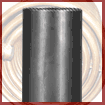 Carbon
Steel Coils Carbon
Steel Coils
Carbon steel is steel where
the main interstitial alloying constituent is carbon. As the
carbon content rises, steel has the ability to
become harder and stronger through heat treating. |
 304-L
Stainless Steel Coils 304-L
Stainless Steel Coils
304 is the standard "18/8" stainless; it is the most
versatile and most widely used stainless steel, available in a
wider range of products, forms and finishes than any other.
Grade 304-L, the low carbon version of 304, does not require
post-weld annealing and so is extensively used in heavy gauge
components. |
 316-L
Stainless Steel Coils 316-L
Stainless Steel Coils
316-L
has better overall corrosion resistant properties than Grade
304, particularly higher resistance to pitting and crevice
corrosion in chloride environments. Grade 316L, the low carbon
version of 316 and is immune from sensitisation . Thus it is
extensively used in heavy gauge welded components. |
 317-L
Stainless Steel Coils 317-L
Stainless Steel Coils
Grade
317 stainless steel is a modified version of 316
stainless steel. It has high strength and corrosion resistance.
Grade 317 stainless steel is tougher than 304 stainless steel.
Grade 317 stainless steel can be welded using fusion and
resistance methods. 317-L filler metal can be used to obtain good
result. |
 321-L
Stainless Steel Coils 321-L
Stainless Steel Coils
321 has the basic austenitic 18/8 steel (Grade 304)
stabilised by Titanium or Niobium. This grade is used because it
is not sensitive to intergranular corrosion after heating. 321
is the grade of choice for applications in the temperature range
of up to about 900°C, combining high strength, resistance to
scaling and phase stability with resistance to subsequent
aqueous corrosion. |
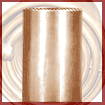 Copper
Coils Copper
Coils
Copper and copper alloys are some of the
most versatile engineering materials available. The combination
of physical properties such as strength, conductivity, corrosion
resistance, machinability and ductility make copper suitable for
a wide range of applications. |
|
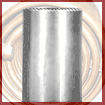 Alloy
20 Coils Alloy
20 Coils
Alloy
20 is a nickel-chromium-molybdenum stainless steel alloy
developed for applications involving sulfuric acid. Its
corrosion resistance also finds other uses in the chemical,
food, pharmaceutical, and plastics industries. Alloy 20 resists
pitting and chloride ion corrosion and its copper content
protects it from sulfuric acid. Alloy 20 is not a SS but a
nickel alloy. |
 Inconel
600 Coils Inconel
600 Coils
Inconel 600 is a Nickel-Chromium alloy with good
resistance to oxidation and corrosion at high temperatures. When
heated, Inconel forms a thick, stable, passivating oxide layer
protecting the surface from further attack. Inconel retains
strength over a wide temperature range, attractive for high
temperature applications. Inconel is often encountered in
extreme environments. |
 Inconel
825 Coils Inconel
825 Coils
Inconel 825 is a Nickel-Iron-Chromium alloy with
additions of Molybdenum and Copper. It has excellent resistance
to both reducing and oxidising acids, to stress-corrosion
cracking and to localised pitting and crevice corrosion. It is
also especially resistant to sulphuric and phosphoric acids. |
 Monel
400 Monel
400
Monel
400 is a Nickel-Copper alloy with high strength and
excellent corrosion resistance in a range of acidic and alkaline
environments and especially suitable for reducing conditions. It
also has good ductility and thermal conductivity. |
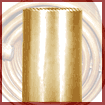 Admiralty
Coil Admiralty
Coil
Admiralty brass contains 30% zinc, and 1% tin which
inhibits dezincification in many environments. Brass has higher
malleability than bronze or zinc. |
 Hastelloy
C Coils Hastelloy
C Coils
Hastelloy C-276 is a Nickel-Molybdenum-Chromium alloy
with the addition of Tungsten, has excellent corrosion
resistance in a wide range of corrosive media and is especially
resistant to pitting and crevice corrosion. Used in any
environment that requires resistance to heat and corrosion but
where the mechanical properties of the metal must be retained. |
 Hastelloy
B Coils Hastelloy
B Coils
Hastelloy B is a wrought nickel-molybdenum alloy that
can be used in the ‘as welded’ condition. This alloy has
excellent resistance to all temperatures and concentrations of
hydrochloric acid. Additionally, it has good stress corrosion
cracking and pitting resistance as well. However, due to the
presence of high molybdenum content, this alloy is expensive. |
 Titanium
Coils Titanium
Coils
Titanium
alloys are metals which contain a mixture of titanium and other
chemical elements. Such alloys have very high tensile strength
and toughness (even at extreme temperatures). They are light
weight, have extraordinary corrosion resistance and the ability
to withstand extreme temperatures. |
 Aluminum
Coils Aluminum
Coils
Aluminum
properties include good appearance, ease of fabrication, good
corrosion resistance, low density, high strength-to-weight ratio
and high fracture toughness. Aluminum has a density around
one-third that of steel or copper, making it one of the lightest
commercially available metals.
|
 Nickel
90/10 Coils Nickel
90/10 Coils
Copper-nickel alloy with an alpha phase structure. Small amounts
of iron and manganese are added to improve corrosion resistance
in high-velocity (from 1 to about 3.5 m/s) waters,
including seawater. The alloy is relatively insensitive to
stress corrosion. It has good cold- and hot- working properties
and is readily weldable. |
 Nickel
70/30 Coils Nickel
70/30 Coils
The
70/30 copper nickel alloys have great resistance to sea
water-related corrosion due to the presence of significant
amounts of manganese and iron. Their high oxidation resistance
is seen in moist air and steam. These alloys are thermally
stable and possess moderate strength even when the temperature
is high. The corrosion resistance and strength of these alloys
are improved by the addition of manganese, iron, niobium, and or
chromium. |
 Nickel
80/20 Nickel
80/20
The
80/20 Copper-nickel alloys have very good resistance to
biofouling and marine corrosion, and possess good fabricability.
Copper gains more strength and corrosion resistance when nickel
is added to it. |
 Nickel
200 Coils Nickel
200 Coils
Nickel with good mechanical properties over a wide range
of temperature and excellent resistance to many corrosives, in
particular hydroxides. Good resistance to corrosion in acids and
alkalis and is most useful under reducing conditions.
Outstanding resistance to caustic alkalis. In acid, alkaline and
neutral salt solutions the material shows good resistance, but
in oxidizing salt solutions severe attack will occur. |
 Duplex
2205 Duplex
2205
Duplex 2205
stainless is a mixed microstructure of austenite and ferrite
(50/50) which has improved strength over ferritic and austenitic
steel grades with similar corrosion resistance qualities. 2205
is the most common duplex alloy which contains 22% chromium and
5% nickel. Greater tensile and yield strength with similar
corrosion resistance to type 304 stainless. |
 Duplex
2507 Duplex
2507
SuperDuplex
stainless like Duplex, is a mixed microstructure of
austenite and ferrite (50/50) which has improved strength over
ferritic and austenitic steel grades. The main difference is
that Superduplex has a higher Molybdenum and Chromium content
which gives the material greater corrosion resistance. |
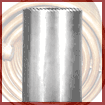 AL
6X N Coils AL
6X N Coils
AL-6XN
alloy is a superaustenitic stainless steel. It exhibits far
greater resistance to chloride pitting, crevice corrosion and
stress corrosion cracking. The high nickel and molybdenum
contents of the AL-6XN alloy give it good resistance to chloride
stress-corrosion cracking. This metal is commonly used in high
temperature and low ph applications in food processing. |
|
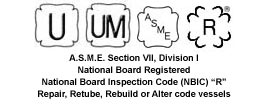 |

© 2012 to 2013. Power Plus International. All rights reserved. |
|
1-800-780-3776 |
|
 |
|
Helical-Coil™ and Power Plus International™, and related marks
and logos displayed on the Site, are our trademarks and may not
be used in any way without our prior express written permission.
Nothing contained on the Site shall be construed as granting, by
implication, estoppel or otherwise, any license or right to use
any of our marks displayed on the Site without our prior express
written permission. All other trademarks not owned by us that
appear on this Site are the property of their respective owners. |

